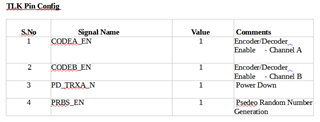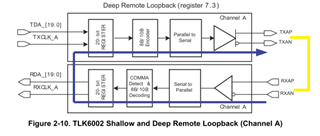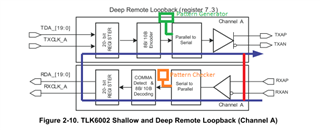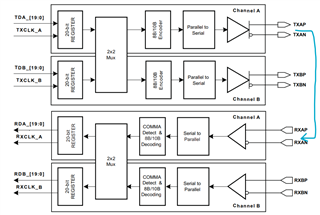Other Parts Discussed in Thread: CDCM6208
Sir
We could able to read and write the TLK6002 Register using MDIO interface.
As per the MDIO Software user guide (SLLU195–November 2013) , there are some device initialization scripts are used along with MDIO GUI software.
Query
Shall I get these scripts file to perform Various operations like Loop back, transmit and receive? Where it is available?
Regards
Ramesh






